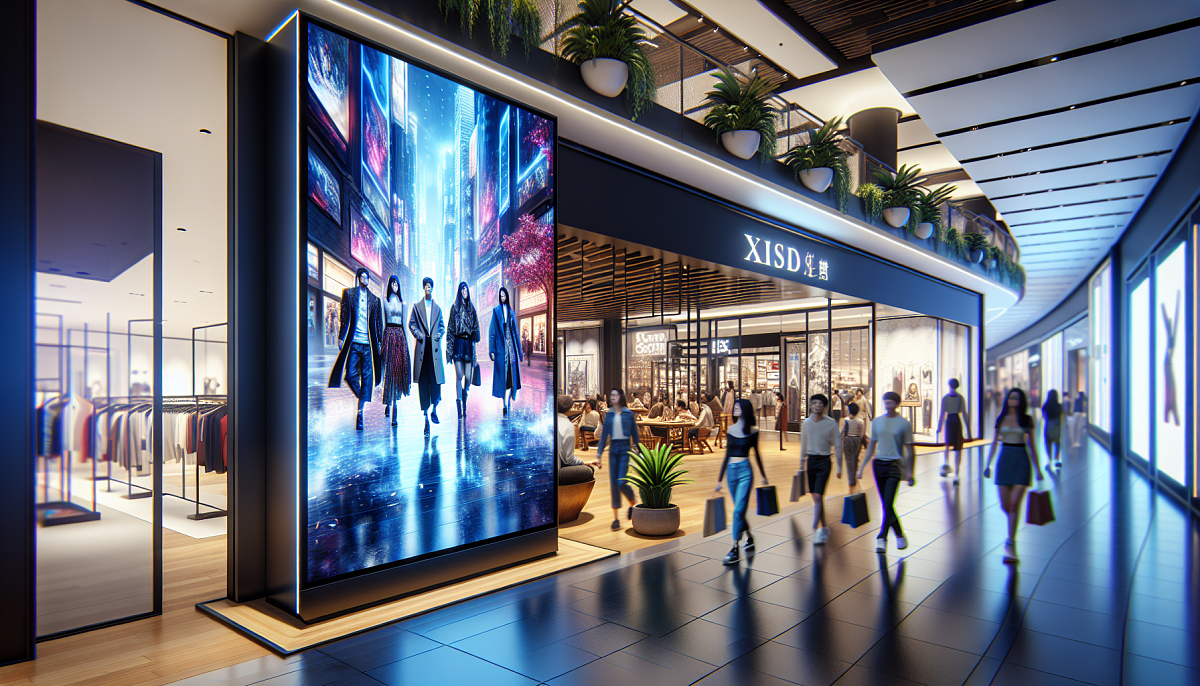
Modern LED panels in advertising
Modern LED panels are gradually replacing old city lights and billboards in the advertising market. They are highly efficient, durable and easy to use. In addition, their versatility allows them to be installed in almost any conditions – indoors or outdoors. LED panels look impressive at any time of the day, including bright daylight and even sunny weather.
Features of LED panels
An LED panel is a modern advertising tool suitable for use both indoors and outdoors. Its main advantage is the ability to apply images or texts to it. The information can be both static and dynamic. The essence of such a panel is to broadcast information.
The structure of the LED light panel includes a metal or plastic case and an acrylic sheet with holes for LEDs. The intensity of the glow is determined by the number of LEDs. Each panel consists of several layers: an aluminum case, a seal, lenses with notches, an acrylic optical sheet and an LED strip. Thanks to this structure, the panel is capable of reproducing images of varying complexity with high quality.
Image quality depends on the number and arrangement of LEDs. LED backlighting creates a bright and dynamic effect. Panels can display both static and dynamic images, as well as useful information, such as work schedules or promotions. It is important to choose a panel with monochrome LEDs if the budget is limited.
Application of LED panels
LED panels are used in various fields. They are especially effective in the dark or in darkened rooms, such as cinemas, bars and nightclubs. They are often used to broadcast information at sporting events, fashion shows and exhibitions.
In shopping centers, LED panels are an excellent tool for informing visitors about current promotions, store openings and new collections. They are also used as signs, showing running lines or promotional videos at store checkouts, and for advertising products on the facades of buildings. This is an ideal solution for temporary events such as exhibitions, fairs or concerts.
Features and advantages of LED panels
LED panels can be classified into three key types:
- SMD configurations, where electrical components are mounted on the main board;
- LED modules equipped with a control system and characterized by long-term use;
- clusters – the most complex option, where the diodes are grouped and enclosed in a sealed housing.
Currently, clusters are less popular on the market compared to SMD configurations and LED modules.
Depending on the location of the panel, there are two types of screens:
- Outdoor or street. They are used in open spaces, most often for outdoor advertising. Such panels must be resistant to various weather conditions and have high brightness.
- Indoor or internal. They are intended for use inside buildings. They are less protected from external factors, which reduces their cost, but requires high image quality.
In addition, LED panels can differ in form factor, size, brightness and power. These can be flexible models, media facades, static signs and other options.
Panels for indoor and outdoor use have different characteristics:
- The brightness of indoor panels is lower, which allows you to save energy.
- The design of indoor screens is simpler, which reduces their cost compared to outdoor models.
- The pixel density is higher for indoor panels, which ensures comfortable viewing.
Panels similar to TVs are now popular, which can replace the image in light boxes.
Due to the reduction in the cost of LEDs, the variety of LED equipment is growing. It can be rented, which can be more profitable than buying, especially for temporary projects.
Advantages of LED panels
The use of LED panels is closely related to advertising and information presentation. The reasons for their popularity include:
- A dynamic image attracts the attention of up to 90% of passers-by, unlike static advertising.
- Most viewers watch the video to the end if it is of high quality.
- The ability to create an interesting and detailed video.
- Compatibility with various content formats: slideshows, animation, video, etc.
- Ideal visibility in all conditions and resistance to ultraviolet radiation.
- Ease and speed of replacing content on the screen.
- High reliability and long service life – at least 50,000 hours.
- Ease of installation and rich functionality, including additional modes and effects.
- The ability to create impressive visual solutions.
- Easy to maintain and adjustable brightness.






